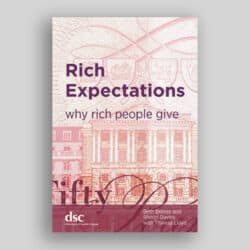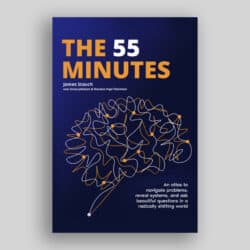Published by The Canadian Centre for Philanthropy, 1983, Toronto, Ontario
95 pages
The Centre’s Budget Study Committee, volunteers with special expertise in tax law as it affects foundations and operating charities, made an intensive study of the proposals of the November 1981 Federal Budget and the revisions announced by the Minister of Finance in April of 1982.
John Hodgson, Q.C., Chairman of the Committee, notes that the economic statement of the new minister, Marc Lalonde, which was delivered in the House of Commons in October 1982 has now been translated into concrete proposals. (See New Tax Proposals for Charities, p. 38.) These proposals were foreshadowed in the following statement:
“On April 21, my predecessor announced disbursement rules for private charitable foundations that met the objectives of both the foundations and. the government. These rules required distinctions be maintained between charitable foundations and charitable organizations. In many cases, this distinction is unnecessary. Accordingly, I am examining the possibility of applying the same rule to both charitable foundations and charitable organizations and propose to make public later this fall draft legislation that would apply the rules proposed to both types of charities, and to delay passage of the legislation until consultations with interested parties are completed. In any event, the new rule would only apply in taxation years commencing after 1983. However, the special rules concerning non-qualified investments, as announced on April 21, will apply at that time to all charities.”
The Budget Study Committee is concerned about the effect of the proposed legislation on operating charities, particularly small charities. The penalty taxes that are proposed are likely to be prejudicial to those organizations with a small or irregular donations income. The Committee is also concerned with possible harmful effects on foundations which are closely tied to charities, e.g., school or hospital foundations. These will be considered to be associated for the purpose of the new resolutions.
The Committee urges all charities to recruit committees of their own to study carefully the draft legislation and assess its effects on their particular organizations. Such committees will find the full text of the Budget Study Committee’s Report an invaluable reference source which should be thoroughly reviewed and studied before they begin their own examinations of the proposed legislation.
This report of the Budget Study Committee of The Canadian Centre for Philanthropy is now available to Associates of The Canadian Centre for Philanthropy for $10; the price for non-Associates is $20.
Send cheque/money order to:
Budget Study Report The Canadian Centre for Philanthropy 185 Bay Street, Suite 504
Toronto, Ontario M5J 1K6
Endowed Charitable Foundations in Canada: A Study of Spending and Investment Strategies Under Revenue Canada Regulations
by David J. Fowler and C. Harvey Rorke
Faculty of Management, McGill University
Published by The Canadian Centre for Philanthropy, 1982, Toronto, Ontario,
125 pages
SUMMARIZED BY C. HARVEY RORKE Endowed charitable foundations have been subjected to minimum disbursement rules (courtesy of Revenue Canada) since 1977. Very briefly, the 1977 rules specified that the foundation (to maintain tax-free status) must disburse 90 per cent of cash (i.e., dividends plus interest) income each year. Capital gains were excluded from this calculation. In 1981 the Minister of Finance proposed to extend the definition of income to include capital gains so that 90 per cent of all income would be disbursed. Although not implemented, this proposal led to an exchange between foundations and the Minister which resulted in a third proposal. This requires the disbursement of 4.5 per cent of the current market value of the endowment portfolio each year.
The purpose of this Study is to investigate the implications of these various rules for the long-term viability offoundations in Canada. Should the minimum spending rules allow long-term growth then the foundation may consider payments above the minimum. A factor which complicates the analysis is inflation.
Inflation affects the real value of the foundation’s capital as well as its spending stream. Iflong-term viability is the goal, then this viability is taken to mean the ability of the foundation to generate a real or inflation-adjusted stream of spending overtime while also maintaining the real value of its capital.
The underlying factor which determines the effect of government-imposed minimum disbursement requirements on the foundation’s desire to maintain long-term viability is the real rate of return which may be earned on investment assets. Although nominal returns may look impressive, these returns must be inflationadjusted to yield real returns. For example, if the nominal return to a portfolio is 10 per cent and inflation is 6 per cent then the real return is only 4 per cent. If inflation is 12 per cent, then this I 0 per cent portfolio has lost 2 per cent of its real value.Real returns to Canadian investments vary considerably over differing time periods, however long-term averages suggest that real returns to stock market investment are of the order of 3.5 per cent to 5 per cent per year. Long-term government bonds tend to yield between 1 per cent and 2 per cent and treasury bills from -1 per cent to +1 per cent. It is within this framework that the various minimum spending rules are investigated.
In brief, the Study indicates thatthe 1977 rules(90 percent of cash income) seem to imply a real annual disbursement level of about 3.5 per cent. Ifthe endowment is invested in common stock, the Study indicates the real returns to the fund would appear to exceed the minimum disbursement requirement so that the fund could even exceed the minimum spending rate (up to perhaps a 4.5 per cent real spending rate) and survive in the long run. However, should the fund invest in lower yielding bonds, the required legal minimum would exceed the real return, leading to the foundation’s ultimate demise.
The rules suggested in 1981 (90 per cent of cash plus capital gains income) imply a real disbursement rate as high as 9 per cent—substantially above the historic return on any class of investment assets-so that no foundation could expect to survive for more than a short time.
The latest rules (4.5 per cent of asset value) imply that the real disbursement level is also 4.5 per cent. At this level, the required real disbursement rate is in the upper range of the long-term real returns to common stock investment. In some of our analyses, foundations would seem to be able to survive in the long run; in others they have only short lives. Experiments with a lower 3.5 per cent minimum disbursement rule suggest that long-run survival is much more feasible for foundations with common stock portfolios and that the foundation can, with caution, voluntarily exceed the minimum spending. Investment in fixed-income bonds will, even at the 3.5 per cent minimum disbursement level, result in the speedy demise of the foundation.
In summary then, it appears that the federal government believes it is politically necessary to require minimum disbursement rates from endowed charitable foundations. If a foundation chooses to provide a long-run stream of spending in inflation-adjusted terms, the minimum disbursement requirements must be below the real returns available in the security markets. The evidence amassed for the Study suggests that the 1977 rules allowed the equity-invested foundation to survive in the long run while meeting and even exceeding (to some extent) the legal minimum payout. The rules proposed in the November 1981 Budget would not have allowed any foundation to survive beyond a few years. The implications of the current rule ( 4.5 per cent of market value) are less clear. If future common stock investment returns turn out to be in the high end of experience then a foundation may maintain its endowment base in the long run.
If these returns are at the low end of experience however, then foundations will disappear if they meet even minimum legal requirements. The real returns available in the bond market are so low that the imposition of any of the above disbursement levels would cause a bond-based endowment to disappear and ensure the foundation’s early failure.
We do not intend, however, to suggest that long-run survival should be the goal of all foundations. Some may wish to disburse their resources quickly so as to benefit current generations rather than future ones.
The government policy implicit in the current minimum disbursement rules is that long-run survival and the accompanying perpetuation of a real donation stream from a foundation are not particularly desirable. Rather, the government prefers to require disbursement levels which concentrate the benefits of the endowed funds on current rather than future generations. Thus, the government apparently wishes to remove, to a large extent, the element of private choice in foundations’ spending streams. Further, it appears that the only way a foundation can survive in the long term is through investment in common stocks—an investment policy which, of course, carries high risk.
This Study is now available to Associates of The Canadian Centre for Philanthropy for $20: the price for non-Associates is $40. Send cheque/money order to:
Rorke/Fowler Study The Canadian Centre for Philanthropy 185 Bay Street, Suite 504
Toronto, Ontario
M5J 1K6
REVIEWED BY EDWARD WAlTZER and JOSEPH BERMAN
Directors, The Agora Foundation
The Rorke/Fowler Study has fulfilled a useful purpose in bringing to those who determine investment policy for endowed charitable foundations some essential economic wisdom. The Study demonstrates exhaustively that real rates of return, taking into account the impact ofinflation, are far below the nominal returns which can be achieved on various investments. Looking to long-run averages, the authors suggest that real returns range from negative 1 per cent to plus 1 per cent for treasury bills to plus 3.5 per cent to5 per cent for common stock investments.
To the extent that its analyses and conclusions assist endowed charitable foundations to improve the performance of their portfolios, the Study will serve a major public interest, since unlike governments, the spending of charitable foundations is limited by the funds available to them. Hence, a successful investment policy is crucial to expenditure levels in the foundation sector.
In addition, to the extent that policymakers need to ascertain real rates of return in order to determine appropriate minimum expenditure levels for endowed charitable foundations, the Study provides some useful benchmarks.
Unfortunately, the Study overreaches these laudable, but limited, objectives. For example, in the opening chapter, the authors argue that a valid spending goal of a foundation is maintenance, in perpetuity, of a real spending stream. They suggest:”This has the advantage of allowing a foundation to continue its good work over a long period of time while permitting the agencies it funds to plan ahead, secure in the knowledge that programs will not have to be reduced as a result of rising costs.”
We do not propose to consider here the supposed advantage of public policies which encourage long-term reliance by agencies on foundation support. It should be stated, however, that the concept is not commonly espoused by either recipients or donors and should not find its way, as an unsupported assertion, into an otherwise rigourous analytical work.
The more profound assumption made by the authors relates to the value of maintaining the capital of endowed charitable foundations in perpetuity. In starting from such a fundamental, yet unsubstantiated, premise, the authors find themselves in good company. The genesis of regulated disbursement requirements appears to have been a policy concerned with the sound investment performance of endowed charitable foundations rather than a proposal that the life span of such accumulations of wealth should be limited. Indeed, while proposing significant reforms to the tax treatment of charities, partially in response to fears expressed that previously proposed disbursement requirements would threaten the longterm survival of particular endowed charties, the Department ofFinance’s discussion paper Charities and the Canadian Tax System does not even suggest that consideration of whether or not it is desirable, as a matter of public policy, to encourage the perpetual life of endowed charitable foundations is a factor in the Department’s current deliberations. The absence of informed debate on this issue parallels a similar absence in the consideration of tax policies that would limit the accumulation and/or perpetuation of wealth elsewhere within our economic framework.
For example, a number of commentators have recently advanced proposals for “flat rate” or “capped rate” income tax systems as a means of broadening the current tax base sufficiently to minimize the major flaws in our present progressive income tax system. The inconsistent and inequitable nature of the present system, which taxes some wealth increments and not others and which allows deductions for some expenditures and not for others, has led to a situation where the personal income tax is neither understood nor respected by many taxpayers. In addition, there is an emerging consensus that an easily understood, equitable and theoretically sound tax system is the only long-term answer to the need for adequate levels of government revenue and the need to overcome the multitude of economic and administrative problems that has arisen from past tinkering with income tax legislation. It is noteworthy that all of the proposals currently attracting popular attention remain firmly anchored to income as the appropriate tax base. This stems, in part, from the Carter Commission’s single-minded dedication to a comprehensive income tax base. While the tax base which was subsequently adopted fell short of that Commission’s view of comprehensiveness, the fixation with income as the appropriate tax base remains. There is, therefore, minimal focus on the taxation of accumulated wealth.
A similar situation prevails in the area of corporate taxation which, through its focus on income, encourages management to rely on retained earnings and depreciation allowances so as to fmance capital investment rather than distributing profits to shareholders and facing the discipline of the marketplace for new capital requirements.
In each of these instances, a strong case can be made for shifting part of the tax burden from earned income to some wider measure of wealth, with a view to institutionalizing a greater degree of redistribution. The fundamental policy concern relates to the merits of the present system of allowing, and indeed encouraging, the accumulation and concentration of eoonomic power in our society.
The tax treatment of endowed charitable foundations poses similar concerns. As noted by the authors in their conqlusion:
“One of the compelling motives behind the establishment of foundations is the desire by wealthy private individuals to perpetuate their own names and memories … If government sets minimum spending requirements too high, they will effectively remove the possibility of perpetual names and memories and destroy private incentives in this direction.”
The authors continue with another revelation of their underlying bias:
“Given the impact that private foundations play in Canadian society it would seem wise not to remove these incentives.”
The desire of wealthy private individuals to perpetuate their names need not be the motive which guides public policy. Quite aside from the merits of allowing wealth to become increasingly concentrated in the hands of a minority, there is another public interest in endowed charitable foundations. To the extent that we, the public, commit foregone taxes to such bodies, we all have a substantial, if indirect, financial interest in their activities. In a sense, such foundations are jointly funded by the public as well as by those who seek to perpetuate their own names (or achieve other personal as well as social objectives). Hence, the public has every reason to be interested in the fundamental policy question of whether endowed foundations should be allowed to exist in perpetuity or whether they might be required to make disbursements out of capital as well as income.
The purpose of this comment is neither to belittle the contribution of the Rorke/ Fowler Study nor to advocate the mandatory, periodic redistribution of accumulated wealth. It is important, however, that readers of the Study appreciate the unsubstantiated assumptions implicit in their analysis. Such assumptions are by no means unique among policymakers and commentators in the taxation field. Perhaps the time has come to explore those assumptions a bit more thoroughly.


